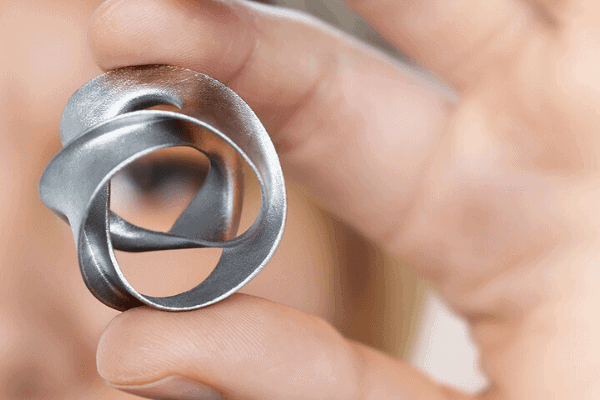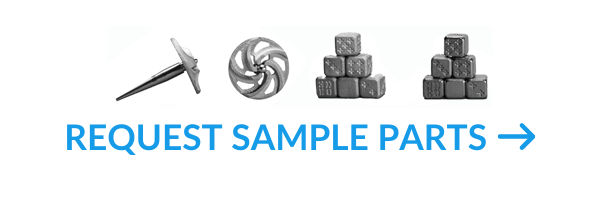Overview of Binder Jetting
Binder Jetting is a powder bed process that utilizes inkjet technology and a binding agent. The liquid binder is used to “glue” the metal powder together within and between layers. A layer of metal powder is first rolled onto the build tray, and then an inkjet print head moves along the x and y axes and deposits binder in the shape of the part for each respective layer. After each layer is created, the build platform is lowered incrementally to make room for the next layer. The part being printed is supported within the powder bed by the unbound powder, which is then removed to complete the process. The result is a “green part” which then needs to be placed in a sintering furnace to achieve final part density.
3DEO Series: An Introduction to Metal 3D Printing
This post is part 3 of a guide by 3DEO meant to introduce engineers and designers to metal additive manufacturing. Subscribe to our email list to stay current on all of our articles.
The other articles in the series are:
1) What is Additive Manufacturing? An Intro & Benefits
2) Overview of the Metal 3D Printing Processes
3) Intro to Powder Bed Fusion (DMLS, SLS, SLM, LMF, DMP, EBM)
ExOne was the original metal binder jetting company, but there is a flurry of activity to release new machines using the technology since the patents have expired in the last few years. Höganäs AB under the Hoeganaes brand has recently released a binder jetting machine Digital Metal, HP has announced a move to metal that is very likely to use binder jetting given their inkjet core competency, and Desktop Metal’s production system due out in 2019 will use binder jetting.
Advantages of Binder Jetting in Additive Manufacturing
Binder jetting introduced a faster and novel way to create metal parts in an additive process as compared to existing technologies such as laser sintering. PBF processes were among the first additive technologies but the high costs and slow build times prompted the need for a higher volume technology that could be cost competitive. The binder jetting machines represented a cost reduction when compared to PBF machine costs, and the throughput proved to be higher as well. The inkjet print heads offer a high level of precision and parts can be created with minute details. The build volume with binder jetting is moderate and comparable to other technologies.
- Lower cost than PBF
- Fast process
- Established process
Disadvantages of Binder Jetting in Metal AM
Due to use of composite materials and binding method, the material characteristics are not always suitable for structural parts. Also, despite the relatively high printing speed, the surface finish usually requires post processing and can add significant time and cost to the overall process. Often, a different metal is added to the part to stabilize it during the sintering process to prevent shrinkage when making larger parts. This metal is typically bronze and the process is called infiltration. If printing in 17-4PH stainless steel for example, up to 40% of a binder jetted part will be bronze infiltrated. This has significant implications on material properties and often precludes parts created with binder jetting from being used in many production applications. The need for infiltration is perhaps the single biggest reason for binder jetting did not see widespread adoption when it first debuted.
- Non-engineering material composite
- Degrading inkjet process
- Significant part shrinkage without infiltration
- Parts are lower in density
Applications of Binder Jetting – Metal 3D Printing
While bronze infiltration might scare away engineers from trusting binder jetted parts in production, the technology has been receiving a lot of attention from new companies looking to put their own spin on binder jetting and push it to it’s full potential. For smaller parts that do not require infiltration, binder jetting can be a very attractive option due to the high speed and detail they are able to achieve while offering lower cost parts than laser sintering. Binder jetting is in a good position for high-volume, low-cost applications.
Work with 3DEO
3DEO makes high quality metal components with our proprietary metal 3D printers. We specialize in manufacturing low/medium volumes on demand, which means there’s no need to worry about long lead times, minimum order quantities, or high tooling/setup costs.



